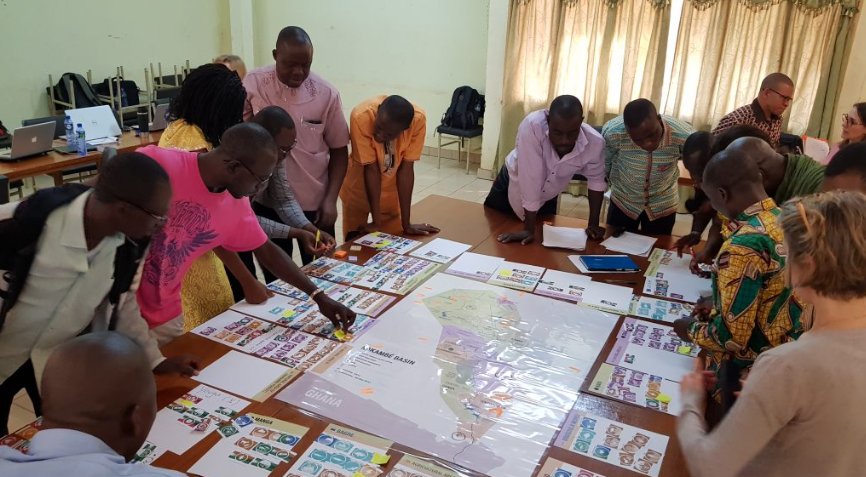The CoSMoS method was also applied in the SUSFISH+ project, where physical objects were used to support a process of systematic “discovery” of interlinkages that shape the Nakambe Basin in Burkina Faso. The project, led by the University of Natural Resources and Life Sciences, Vienna, helped stakeholders gain unique insights into potential solutions to those challenges.
The first workshop that took place in Vienna in September 2018 was aimed at identifying the important challenges and opportunities in the basin. During the ensuing discussions participants, with the support of the SUSFISH+ team, expanded the scope of indicators. The second workshop took place in Ouagadougou in February 2019. It convened 42 stakeholders from Burkina Faso to jointly discuss desirable futures and pathways concerning fish management and water security, including fishery stakeholders and decision-makers.

Participants of the workshop first analyzed the systemic feedback loops involving water availability, pollution, fish harvest and well-being indicators such as health and food security; and gender and economic inequalities. The second step was to determine the risks and potentials of the Nakambe Basin in the geographical context. The findings of both workshops provided additional information on gaps in achieving future goals for the basin. Through the process, new potential solutions emerged, which could be directly discussed within the safe space created by the process. More detailed findings from the workshops were published in the 2020 article “Multiple-Line Identification of Socio-Ecological Stressors Affecting Aquatic Ecosystems in Semi-Arid Countries: Implications for Sustainable Management of Fisheries in Sub-Saharan Africa.”

